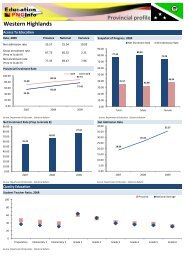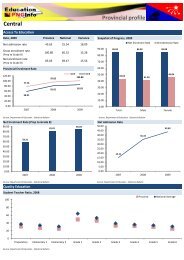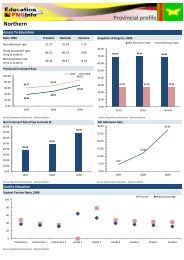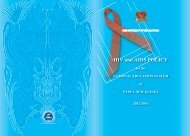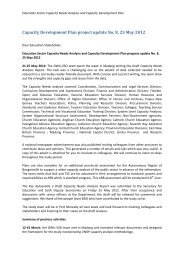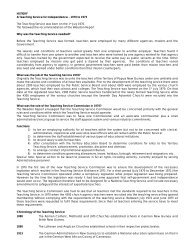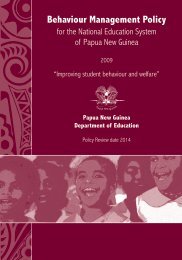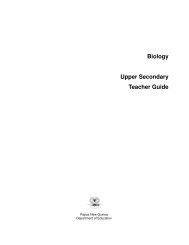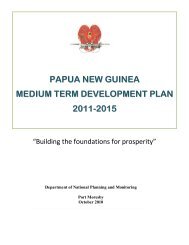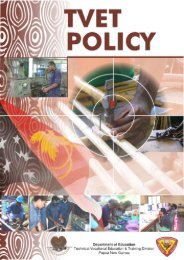HIV/AIDS Teacher Resource Book - Department of Education
HIV/AIDS Teacher Resource Book - Department of Education
HIV/AIDS Teacher Resource Book - Department of Education
- No tags were found...
Create successful ePaper yourself
Turn your PDF publications into a flip-book with our unique Google optimized e-Paper software.
The epidemic in PNG will not be controlled until people change their sexualbehaviour and are faithful. Being faithful to your partner does not protect you unlessthey are faithful to you.4.9 Condoms used correctly every time you have sexCondoms are an important issue for young people. This section aims to explore thedebates and discussion about condoms and contains accurate facts about them.Self study: What does the DoE <strong>HIV</strong>/<strong>AIDS</strong> Policy say about condoms? What do youthink about this? Discuss your views with a same sex peer group.There are male and female condoms. Female condoms are still sometimes difficult t<strong>of</strong>ind in PNG although that is changing. Male condoms are widely available. Condomsare free in PNG from health workers, PACs and NGOs. Used correctly malecondoms are 95-98% safe and female condoms are 99% safe (they are made <strong>of</strong> atougher material). <strong>HIV</strong> (like water, sperm, semen and vaginal fluid) cannot passthrough a condom. There are no holes in condoms.Young people must be shown how to use them correctly and responsibly.4.10 How effective are condoms?There is a large body <strong>of</strong> evidence that suggests being taught how to use condomssafely and responsibly does not make people more promiscuous and actually makespeople’s behaviour less risky. Used properly condoms are very effective inpreventing the spread <strong>of</strong> <strong>HIV</strong> and STIs.For example, in Thailand, the promotion by the government <strong>of</strong> 100% condom use bycommercial sex workers led to a dramatic increase in the use <strong>of</strong> condoms (from 14%in 1990 to 94% in 1994) and equally dramatic decline in the nation-wide numbers <strong>of</strong>STI cases (from 410,406 cases to 27,362 cases).Self study: If possible, use the internet and search for the <strong>HIV</strong>/<strong>AIDS</strong> country reportsfor Uganda, Thailand and Cambodia. You can also search for other examples <strong>of</strong>countries using the ABCD approach like PNG and Uganda.The most convincing research on the effectiveness <strong>of</strong> condoms in preventing <strong>HIV</strong>infection has come from studies undertaken on couples where one partner is infectedwith <strong>HIV</strong> and the other is not. These studies show that, with consistent condom use,the <strong>HIV</strong> infection rate among uninfected partners was less than 1 percent per year.It is important to remember that condoms do not encourage people to havesex, are an effective protection against <strong>HIV</strong> and STI infection, and that they canbe used by single or married people.4.11 Why do people use condoms?Some reasons people use condoms include:• Prevent transmission <strong>of</strong> <strong>HIV</strong> and STIs• Protect themselves and their partners• Because they are confident users and can talk aboutsafe sex with their partner• Because they have access to them• For family planning• Because they know about the risks and consequences <strong>of</strong> unsafe sex.31





